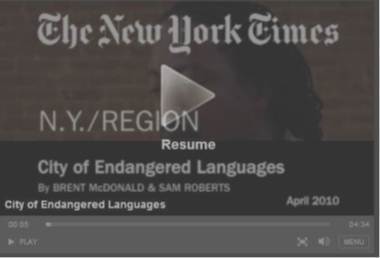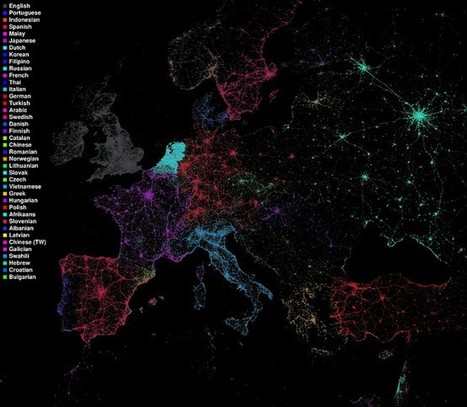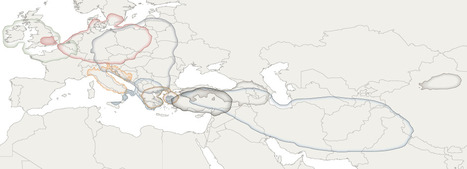In this age of fast travel and instant digital communications, we tend to forget that not so long ago, distances were subjectively very different.
Get Started for FREE
Sign up with Facebook Sign up with X
I don't have a Facebook or a X account
 Your new post is loading... Your new post is loading...
 Your new post is loading... Your new post is loading...

Elizabeth Bitgood's curator insight,
January 29, 2014 10:25 AM
This article and video were very interesting. They point out how a city full of immigrants can help preserver a dying language. The work being done to learn about and preserve these obscure languages is great. The fact that in New York you will hear language spoken more there than in their home country is astounding to me and very interesting. This fact is key to preserving these language as they are from areas of the world were the technology level is much lower and less likely to be preserved. It is also interesting as it shows where people are coming from to live in NY. The city draws immigrants like a sponge draws in water and this adds to the cultural mosaic that is NY city.
Emily Bian's curator insight,
October 3, 2014 5:13 PM
This is a thematic map showing the different languages spoken on Twitter in Europe. This Europe thematic is really neat to look at, but it also shows globalization in that Twitter is everywhere, and people are more connected because of it. This increases interactions between people living in different countries, and even different continents. 3) language and communication This will help future APHUG students, because Twitter is relatable to a lot of teens and it will open their eyes to the different languages spoken across Europe and the world, and it's not just English. It connects them to the rest of the world. |
Cynthia Williams's curator insight,
July 19, 2013 12:27 PM
And if we did choose one language that would be the world standard what would it be? I would guess that the Western cultures would demand English. But why should English be the standard? |
















"This series of maps shows the great leaps and bounds that were made during the 19th century in transportation technology in the United States. This impacted population settlement, economic interactions and functionally made the great distances seem smaller. This is what many call the time-space compression; the friction of distance is diminished as communication and transportation technologies improve.
Questions to Ponder: When someone says they live "10 minutes away," what does that say about how we think about distance, transportation infrastructure and time? How is geography still relevant in a world where distance appears to becoming less of a factor? "
With the development of modern equipment useful in maneuvering around the world, the time it took those living in the 1800's has been reduced to getting anywhere around the world with time spanning from 30- 24hrs. This of course has been made possible due to the development of roads, better boating constructions and air travel.
Since 1800 the rate of travel has increased exponentially through the years. From the very beginning of travel, it would take close to a week just to get from the east coast to the middle of the United States. Through the use of railroads we have overcome the "time" factor and essentially eliminated it from playing a role in the way we travel. Today's advances in transportation has made seeing others much easier and most importantly it has developed a connected world that allows for transport of goods and services possible to such an extent that as citizens of the United states we are able to access almost anything we need from a day to day basis. A technology like this will continue to expand and grow to make the life of people that much easier.